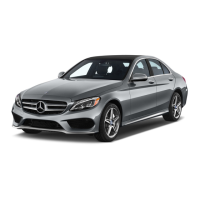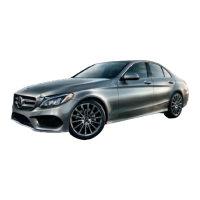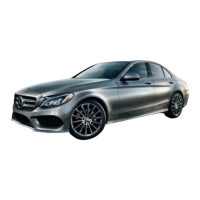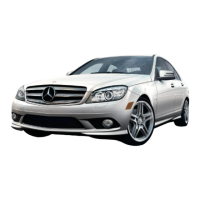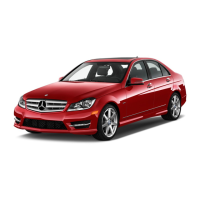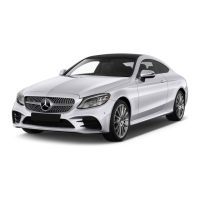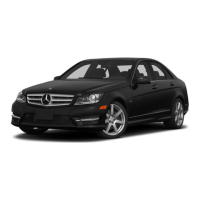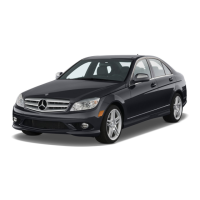!
When COLLISION PREVENTION ASSIST
PLUS, DISTRONIC PLUS or the HOLD func-
tion is activated, the vehicle brakes auto-
matically in certain situations. To avoid
damage to the vehicle, deactivate these
systems in the following or similar situa-
tions:
R
when towing away
R
in a car wash
!
Make sure that the electric parking brake
is released. If the electric parking brake is
faulty, visit a qualified specialist workshop.
!
Only secure the tow cable or tow bar to
the towing eyes or, if available, to the trailer
tow hitch. You could otherwise damage the
vehicle.
!
Observe the following points when towing
with a tow rope:
R
secure the tow rope on the same side on
both vehicles.
R
make sure that the tow rope is not longer
than legally permitted. Mark the tow rope
in the middle, e.g. with a white cloth
(30 x 30 cm). This makes other road
users aware that a vehicle is being
towed.
R
only secure the tow rope to the towing
eye.
R
observe the brake lamps of the towing
vehicle while driving. Always maintain a
distance so that the tow rope does not
sag.
R
do not use steel cables or chains to tow
your vehicle. You could otherwise dam-
age the vehicle.
!
Do not use the towing eyes for recovery
purposes as this could damage the vehicle.
If in doubt, recover the vehicle with a crane.
!
Pull away smoothly when towing away or
tow-starting a vehicle. If the tractive power
is too high, the vehicles could be damaged.
!
Shift the automatic transmission to N and
do not open the driver's or front passeng-
er's door during towing. The automatic
transmission may otherwise shift to posi-
tion P, which could damage the transmis-
sion.
!
You may tow the vehicle for a maximum of
50km. A towing speed of 50 km/h must not
be exceeded.
For towing distances over 50 km, the entire
vehicle must be lifted up and transported.
!
If you tow or tow-start another vehicle, its
weight must not exceed the maximum per-
missible gross vehicle weight of your vehi-
cle.
Details on the permissible gross vehicle
weight of your vehicle can be found on the
vehicle identification plate (Y page 468).
Observe the legal requirements for the rele-
vant countries when towing.
It is better to have the vehicle transported
than to have it towed.
If the vehicle has suffered transmission dam-
age, have it transported on a transporter or
trailer.
Vehicles with automatic transmission:
when towing a vehicle, the automatic trans-
mission must be in position N. If the auto-
matic transmission cannot be shifted to posi-
tion N, have the vehicle transported on a
transporter or trailer.
The battery must be connected and charged.
Otherwise, you:
R
cannot turn the key in the ignition lock to
position 2
R
cannot release the electric parking brake
R
cannot shift the transmission to position N
on vehicles with automatic transmission
Deactivate the automatic locking feature
before the vehicle is towed (Y page 98). You
could otherwise be locked out when pushing
or towing the vehicle.
Deactivate tow-away protection (Y page 86)
before the vehicle is towed.
Towing away and tow-starting
421
Breakdown assistance
Z
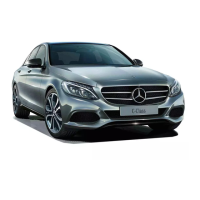
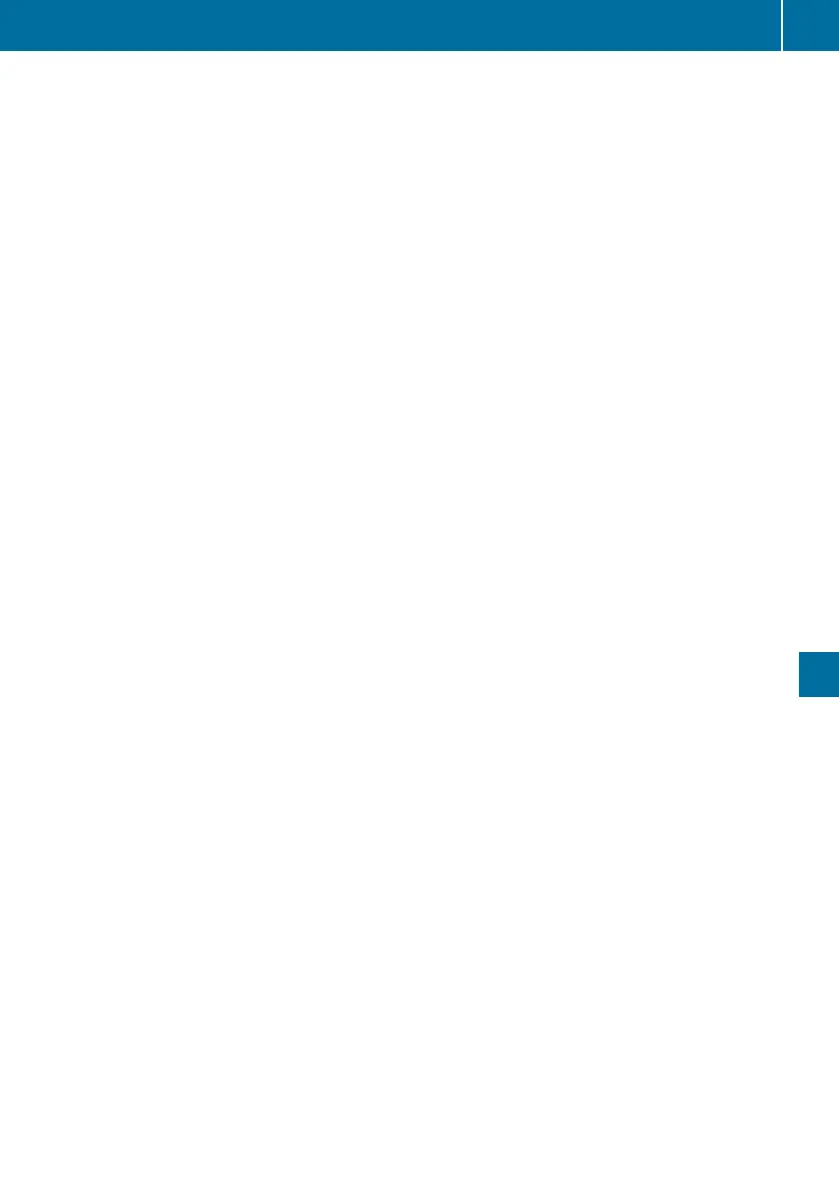